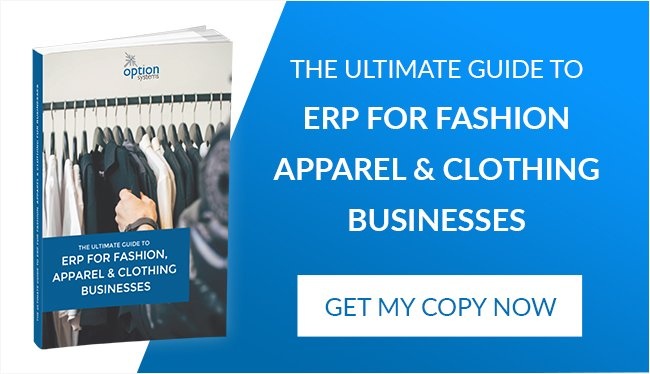
Many businesses have discovered the benefits of implementing an ERP platform to streamline operations, reduce waste, manage inventory, and improve collaboration between departments. Apparel businesses, however, tend to be more complex than other organisations. Every garment within a product line can have many variations – in colour, style, or size – so tracking inventory through different sales channels is a challenge.
An ERP platform makes managing your inventory easier, but there are also other ways in which ERP software can boost productivity. Only a vendor who has experience of providing ERP to apparel businesses can offer software with the right features to increase productivity and profits, while minimising overheads and admin. Four of the most important features include:
1) Colour/Size Matrix
Because of the complex nature of apparel inventories, ordering stock and materials can be a logistical nightmare. A colour/size apparel matrix makes the order entry simpler, as quantities of each garment can be ordered by colour, size, or style. Product availability is also readily available to view, so instant decisions can be made when placing orders. Furthermore, inventory can be managed and edited succinctly without needing to enter each item line by line.
2) Anytime, Anyplace Access
Long before the impacts of the global pandemic were felt, apparel and footwear
manufacturers were discovering the benefits of making critical sales decisions away from the office. Because of the continually evolving shape of apparel sales and the complexities of inventory, access to real-time data is more important than ever, especially as remote working becomes a more common way of life. An ERP platform that assimilates business data in a single dashboard for anytime, anyplace access will offer considerable benefits to growing apparel brands.
3) Transformational Purchase Orders
Transformational purchase orders are standard in the apparel sector, so an ERP that can accommodate these important sales will increase productivity and boost profits. In apparel, a ‘white label’ product is sometimes modified by a third-party, who may add unique graphics, logos, or embroidery to the original garment. In this situation, the transformed product has additional costs – the third-party’s handling and processing fees, in addition to the original product cost. Multi-step transformations can involve several vendors, so ERP software can generate new purchase orders and dropship information automatically, as well as creating payables for each layer of costs from different vendors. This streamlined approach by ERP software greatly reduces administration while accurately capturing the costs added through the various processes.
4) Integrated Customer Relationship Management
ERP software that offers an integrated CRM creates a single point of entry for all consumer, customer and supplier information, such as names, addresses, and contact details. This eradicates the need to trace each party’s information separately in a standalone database or spreadsheet, and boosts productivity by allowing you to:
- Quickly generate quotes for customers, which can be converted to sales orders.
- Create personalised pricing rules for customers based on the negotiated terms.
- Record oral and email communications from different parties.
STYLEman: An ERP For The Apparel Industry
STYLEman is an effective ERP platform that has been designed to meet the unique needs of the apparel sector. To find out more about STYLEman ERP and how it can support your business, please request a free demonstration of our software by clicking here.
Image source: Unsplash


